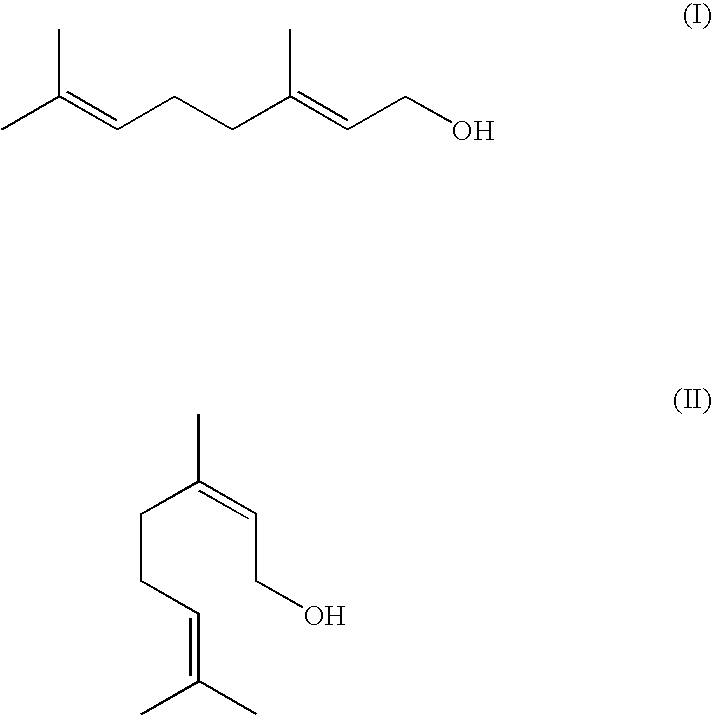Method For The Production Of Menthol
a technology of menthol and educts, which is applied in the field of menthol production methods, can solve the problems of l-menthol synthesis from inexpensive achiral educts, and achieve the effect of improving the synthesis efficiency and reducing the difficulty of menthol production
- Summary
- Abstract
- Description
- Claims
- Application Information
AI Technical Summary
Benefits of technology
Problems solved by technology
Method used
Image
Examples
example 1
Enantioselective Hydrogenation of Geraniol With the Catalyst System Ru / (S)-BINAP
[0120]Under an inert gas atmosphere, 2.4 mg of [RuCl2(C6H6)]2 (corresponding to 0.01 μmol of Ru) were dissolved in 75 ml of methanol, 6.0 mg (80.01 μmol) of (S)-BINAP were added and the mixture was stirred for 12 h at room temperature until the resulting solution was clear. The catalyst solution was transferred to an autoclave fitted with a gas dispersion stirrer and a further 75 ml of methanol and 14.8 g of geraniol (0.096 mol, purity 95%) were added. The mixture was stirred for 24 h at a hydrogen pressure of 100 bar and a temperature of 40° C. A conversion of 98.3% was then determined by gas chromatography. A yield of 97.2% of (R)-citronellol with an enantiomeric purity of 95.2% ee was obtained.
example 2
Dehydrogenation of Optically Active Citronellol in the Gas Phase
[0121]A tubular reactor heatable by means of a salt melt was charged with 10.8 g of a catalyst consisting of 55% by weight of ZnO and 45% by weight of CaCO3 in the calcite modification (determined in each case in the form of the oxides of the calcined catalyst mass). At a temperature of 400° C., a mixture of 46 Nl / h of nitrogen and 3.44 g / h of (R)-citronellol with an enantiomeric excess of 95% ee was passed over the bed. Citronellal was obtained with an enantiomeric excess of (R)-citronellal of 95% ee, the conversion being 50.2% and the selectivity 75.5%.
PUM
| Property | Measurement | Unit |
|---|---|---|
| enantiomeric excess | aaaaa | aaaaa |
| enantiomeric excess | aaaaa | aaaaa |
| pressure | aaaaa | aaaaa |
Abstract
Description
Claims
Application Information
 Login to View More
Login to View More - R&D
- Intellectual Property
- Life Sciences
- Materials
- Tech Scout
- Unparalleled Data Quality
- Higher Quality Content
- 60% Fewer Hallucinations
Browse by: Latest US Patents, China's latest patents, Technical Efficacy Thesaurus, Application Domain, Technology Topic, Popular Technical Reports.
© 2025 PatSnap. All rights reserved.Legal|Privacy policy|Modern Slavery Act Transparency Statement|Sitemap|About US| Contact US: help@patsnap.com



